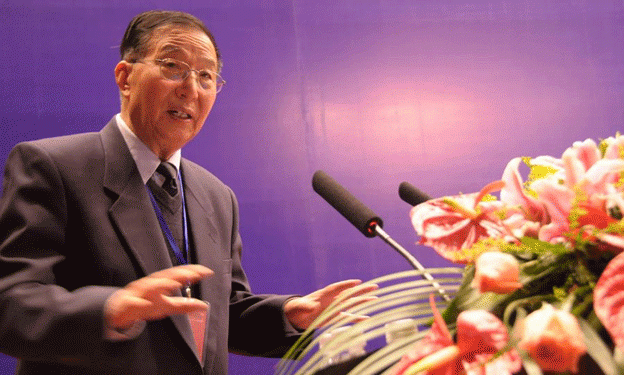At 93, Li Zhensheng is a living legend in the world of agricultural science. With a career spanning over 70 years, he has dedicated his life to a singular mission: ensuring that China’s vast population has enough food, particularly wheat, the nation’s staple crop. His remarkable contributions to wheat breeding have not only improved yields but also fortified crops against devastating diseases, providing food security for millions.
Born in 1931 in Zibo, Shandong Province, Li’s early years were marked by hardship. As a teenager, he witnessed the catastrophic famine of the 1940s, an event that shaped his life’s work. Determined to prevent such suffering, Li pursued a career in agriculture, studying at Shandong Agricultural College before joining the Chinese Academy of Sciences (CAS).
In the 1950s, China was grappling with a major crisis in wheat production. Wheat stripe rust, a disease capable of slashing annual yields by over 5 million tonnes, was ravaging the Yellow River Basin. Traditional breeding methods had proven ineffective, with newly resistant varieties losing their resistance within just five years. This dire situation prompted Li to explore radical solutions.
Inspired by the resilience of pasture grasses, Li proposed a groundbreaking idea: hybridizing wheat with pasture grass to create a new disease-resistant strain. This crossbreeding was fraught with scientific challenges, as the two species were distant relatives. However, Li’s perseverance paid off. After more than 20 years of tireless research, Li and his team developed the “Xiaoyan” series of wheat varieties. Among them, “Xiaoyan No. 6” stood out, not only for its resistance to eight types of stripe rust but also for its ability to significantly boost wheat yields. By 2003, over 20 million hectares of “Xiaoyan” wheat had been planted across China, adding more than 7.5 million tonnes of wheat to the country’s food supply.
Li’s scientific ingenuity didn’t stop there. He went on to revolutionize the wheat breeding process using chromosome engineering, which reduced the time required to develop new hybrid varieties from decades to just three years. This breakthrough allowed China to stay ahead of rapidly evolving crop diseases, ensuring the nation’s agricultural resilience.
Beyond wheat breeding, Li also initiated large-scale agricultural projects aimed at improving grain output in underperforming regions. In 1987, he spearheaded a comprehensive plan to revitalize low-yield farmland in the Huang-Huai-Hai region. Over the course of six years, the project added 25 million tonnes of grain to China’s production, strengthening the country’s food security.
Even in his later years, Li continued to push for agricultural innovation. At the age of 80, he launched the “Bohai grain silo” project, which successfully transformed saline land into productive farmland, increasing grain output by 10 million tonnes in the Bohai rim region over five years. At 90, he proposed the creation of a “coastal grass belt” to bolster China’s feed-grain security, demonstrating his unwavering commitment to agriculture even in his nineties.
Li’s work has not only revolutionized wheat breeding in China but also answered a critical question posed by the international community: who will feed China’s massive population? Through decades of hard work and innovation, Li’s legacy is clear—China can, and does, feed itself.
Though Li Zhensheng can no longer visit the fields in person, he remains actively involved in agricultural research and mentoring the next generation of scientists. His life’s work serves as an enduring reminder that long-term dedication to a clear goal can lead to monumental achievements. As Li often tells his students, “There is a limit to what one can achieve in a lifetime, so the goal must be clear and focused.”
Li Zhensheng’s life-long dedication to wheat breeding has had an immeasurable impact on China’s food security. His breakthroughs in developing disease-resistant, high-yield wheat varieties and his contributions to large-scale agricultural projects have ensured that China’s population remains well-fed. His story is a testament to the power of scientific innovation and perseverance in the face of immense challenges. As the world continues to face food security issues, Li’s legacy offers valuable lessons for the future of agriculture.
Error





